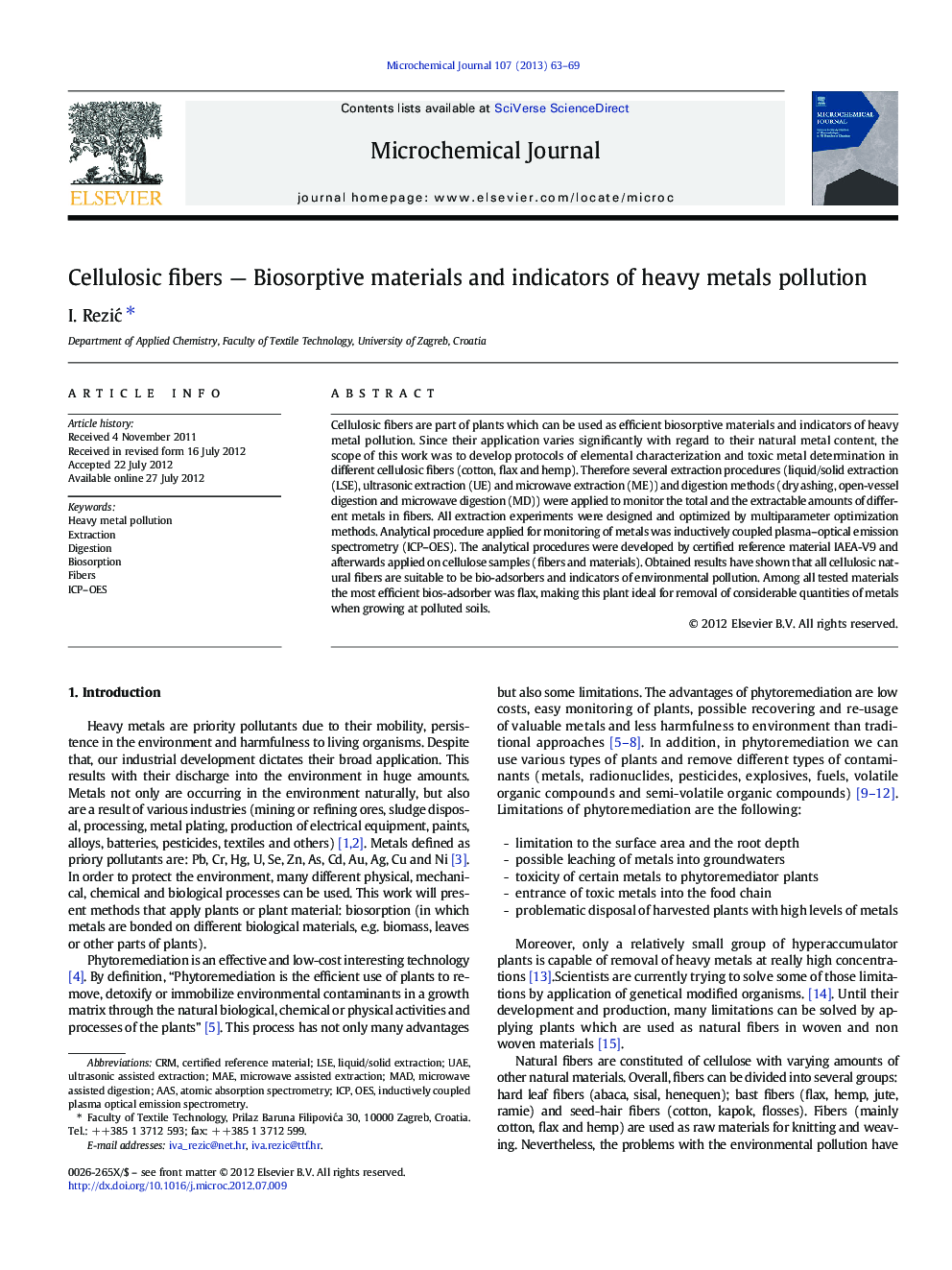| Article ID | Journal | Published Year | Pages | File Type |
|---|---|---|---|---|
| 1227857 | Microchemical Journal | 2013 | 7 Pages |
Cellulosic fibers are part of plants which can be used as efficient biosorptive materials and indicators of heavy metal pollution. Since their application varies significantly with regard to their natural metal content, the scope of this work was to develop protocols of elemental characterization and toxic metal determination in different cellulosic fibers (cotton, flax and hemp). Therefore several extraction procedures (liquid/solid extraction (LSE), ultrasonic extraction (UE) and microwave extraction (ME)) and digestion methods (dry ashing, open-vessel digestion and microwave digestion (MD)) were applied to monitor the total and the extractable amounts of different metals in fibers. All extraction experiments were designed and optimized by multiparameter optimization methods. Analytical procedure applied for monitoring of metals was inductively coupled plasma–optical emission spectrometry (ICP–OES). The analytical procedures were developed by certified reference material IAEA-V9 and afterwards applied on cellulose samples (fibers and materials). Obtained results have shown that all cellulosic natural fibers are suitable to be bio-adsorbers and indicators of environmental pollution. Among all tested materials the most efficient bios-adsorber was flax, making this plant ideal for removal of considerable quantities of metals when growing at polluted soils.
► Cellulosic fibers as potential bio-adsorbers investigated ► LSE, UAE and MAE compared ► LSE, UAE and MAE optimized by experimental design ► 3 digestion methods compared
